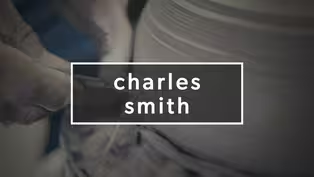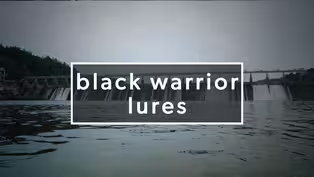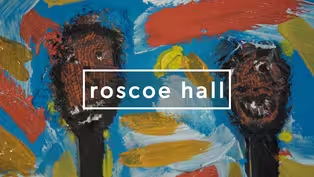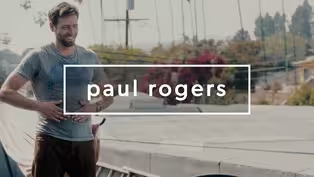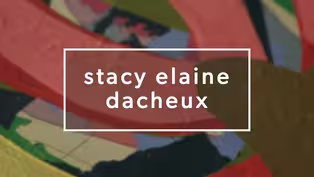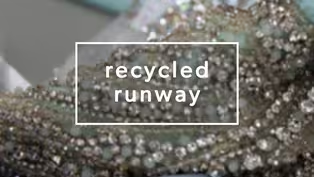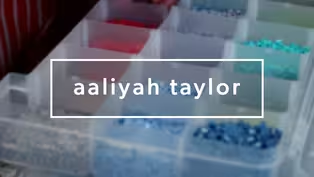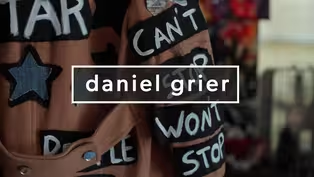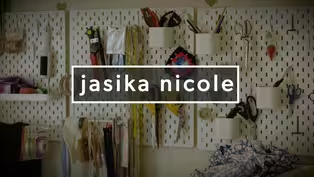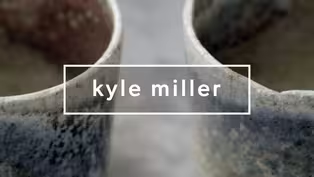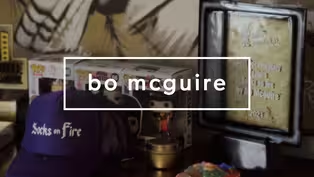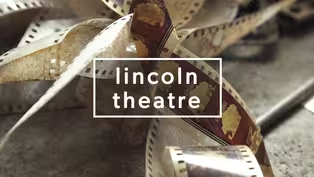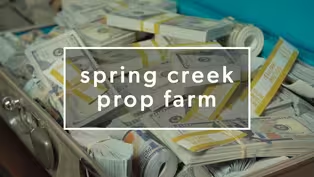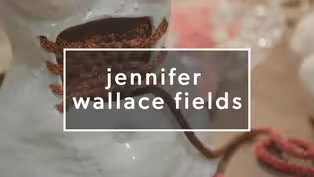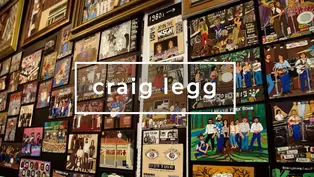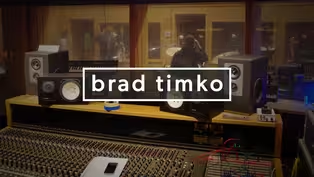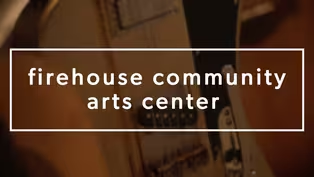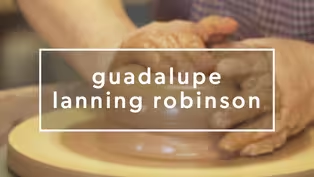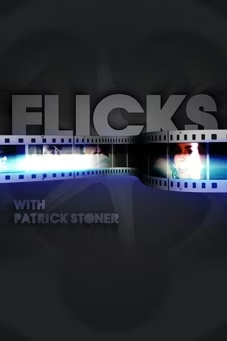Monograph
Stacy Elaine Dacheux
Clip: Season 5 | 5m 9sVideo has Closed Captions
Painter and writer Stacy Elaine Dacheux
University of Alabama alum, Stacy Elaine Dacheux gives us a thoughtful look into what making art means and the benefits of using creativity for expression and connecting with the community around us. With her practice as a writer and painter she cultivates a sense of caring for those around her as well as care for herself.
Problems playing video? | Closed Captioning Feedback
Problems playing video? | Closed Captioning Feedback
Monograph is a local public television program presented by APT
Monograph
Stacy Elaine Dacheux
Clip: Season 5 | 5m 9sVideo has Closed Captions
University of Alabama alum, Stacy Elaine Dacheux gives us a thoughtful look into what making art means and the benefits of using creativity for expression and connecting with the community around us. With her practice as a writer and painter she cultivates a sense of caring for those around her as well as care for herself.
Problems playing video? | Closed Captioning Feedback
How to Watch Monograph
Monograph is available to stream on pbs.org and the free PBS App, available on iPhone, Apple TV, Android TV, Android smartphones, Amazon Fire TV, Amazon Fire Tablet, Roku, Samsung Smart TV, and Vizio.
Providing Support for PBS.org
Learn Moreabout PBS online sponsorship(bouncy upbeat music) - This idea of art, like, breathes and it's something that we sort of all can, like, touch and it, like, changes our lives and the way we are with people and brings us together.
And it allows us to have fun and know each other.
Like, I want that, I want that for my family.
I want that for me.
(bouncy upbeat music) My name is Stacy Elaine Dacheux.
I am an artist, a writer, a maker, a mom, an art enthusiast.
My first love is writing, basically.
I became a writer.
I love writing about art and I love meeting other artists and that's a big part of my practice too.
So not just making, but how am I engaging in the community?
How am I supporting other artists?
How am I learning from other artists?
And I think, like, the process of learning about art never stops.
It's so important to be an art enthusiast.
That's why I like to say that I am one because I feel like that's where it all started.
Just like being excited about art, wanting to meet other artists or, like, see something and, like, how did that person make that?
I gotta interview... Like, a lot of my writing connected me to other people who really just gave me tips on, like, how to be an artist or how to be, like, living life as an artist.
(bouncy upbeat music) We engage in art, a lot of times, through a museum or a gallery, and I think that's a really special place.
It's like going to church or something.
It's, like, a very sacred, spiritual, isolated space for art and it's really important.
So what I'm about to say does not negate the necessity of that.
But I think, like, my big thing in my own practice is how do I bring those pieces into the everyday life?
Like, how does that, like, I guess if we were gonna go with, like, this sort of religious comparison, like, you go to church and then you're like, "Okay, that was that, that was in that space."
And then how do I take whatever's in that space into my daily life, into my daily practice?
And I think, as a writer and as an artist and art enthusiast, how do I take what's in the gallery or the museum and make it meaningful to me and also to other people maybe?
Like, so it's not this sort of, like, high art, low art, like, thing.
It's sort of, like, this everyday, like, kind of sustenance that we need to sort of have a full life.
I think art is a great way for us to sort of, like, know each other's interiors.
And I'm very interested in other people, not just how they present, like, this polished version of what they are or what they look like or what they feel like on a resume.
You know, I'm more interested in, like, you know, something that goes into a little bit more raw space.
And I think my art practice is about that.
And I think, like, the community is about that, you know, community, a group of artists, that way of being an artist, not just, like, "I make things.
"I'm alone and this is my business, this is what I do."
Like, people will tell you to, "Oh, you gotta do this, "you gotta do that.
"Oh, dress like this, be like this "if you want it to be taken seriously."
And I'm like, "Well, I think the work "will stand for itself."
And I just feel like being yourself is the most important thing in your practice.
And it's making work and knowing that you can, and just showing up for it is, like, the best thing.
(bouncy upbeat music) The way I start out is very messy.
And it's almost sort of, like, a puzzle that I'm trying to figure out.
It's a kind of an excavation in a way.
You know, like, I kind of make the canvas a little bit messy.
There needs to be lots of mistakes.
I, sometimes, will kind of complete it almost, where it looks sort of clean and nice and then I'm like, "It's too nice."
Like, "There needs to be more of a mess here," and I'll kind of, like, mess it up again and I'll try to refigure it.
The colors are off, you know, it's very time consuming.
(laughs) There's probably an easier way to do it, but I kind of like the longer way.
It means that, like, the more I'm with a canvas, the more I have a relationship to it and the more I have an investment with it.
So it feels good to me when I've really taken time.
(bouncy upbeat music) So when I do a commission, someone will give me something that's meaningful to them, like a piece of writing from their past, like a eulogy or, like a date book that used to be their mom's or something like that, that just has, like, a lot of sustenance.
And I will, basically, translate it into an abstract piece.
And then it becomes sort of something else.
You know, it's another form of care, where I can sit with something that is meaningful to them.
It doesn't just get buried under the bed or, you know, in a box somewhere.
It's something that can be a time capsule for this time in their life.
I guess the act of painting takes care of me.
Just sitting with colors feels really nice.
And the act of sitting with someone else's content feels like care for them.
So in a way, we're taking care of each other.
(bouncy upbeat music)
Video has Closed Captions
Clip: S5 | 6m 47s | Charles Smith shows you where to find the story hidden in plain sight. (6m 47s)
Video has Closed Captions
Clip: S5 | 6m 59s | A fisherman outside of Tuscaloosa is always finding new ways of doing things. (6m 59s)
Video has Closed Captions
Clip: S5 | 8m 19s | Chef and painter Roscoe Hall brings his life's experiences together to find his own voice. (8m 19s)
Video has Closed Captions
Clip: S5 | 6m 15s | Oscar-winner Paul Rogers on the value of collaboration and the core of outstanding work. (6m 15s)
Video has Closed Captions
Clip: S5 | 5m 9s | Painter and writer Stacy Elaine Dacheux (5m 9s)
Video has Closed Captions
Clip: S5 | 5m 45s | Birmingham youths transform old clothes into high fashion. (5m 45s)
Video has Closed Captions
Clip: S5 | 6m 54s | Birmingham, Alabama jewelry and clothing designer, Aaliyah Taylor (6m 54s)
Video has Closed Captions
Clip: S5 | 4m 34s | Highlighting the world of fashion in the Magic City with Daniel Grier (4m 34s)
Video has Closed Captions
Clip: S5 | 7m 45s | Actor and maker based in Los Angeles, Jasika Nicole (7m 45s)
Video has Closed Captions
Clip: S5 | 4m 43s | Fairhope, Alabama ceramics artist, Kyle Miller (4m 43s)
Video has Closed Captions
Clip: S5 | 5m | Poet and Filmmaker Bo McGuire from Gadsden, AL (5m)
Video has Closed Captions
Clip: S5 | 6m 14s | The story of Bessemer's historically Black theater and efforts to restore it. (6m 14s)
Video has Closed Captions
Clip: S5 | 5m 37s | tour spring creek film prop farm in montevallo alabama (5m 37s)
Video has Closed Captions
Clip: S5 | 7m | A studio visit with ceramic artist Jennifer Wallace Fields (7m)
Video has Closed Captions
Clip: S5 | 4m 50s | Craig Legg's Birmingham rock and roll retrospective. (4m 50s)
Video has Closed Captions
Clip: S5 | 4m 48s | Visit a historic recording studio near Muscle Shoals (4m 48s)
Firehouse Community Arts Center
Video has Closed Captions
Clip: S5 | 5m 54s | Firehouse Community Arts Center in Avondale, AL (5m 54s)
Video has Closed Captions
Clip: S5 | 4m 33s | Alabama based potter stays grounded to her Mexican roots through her craft (4m 33s)
Providing Support for PBS.org
Learn Moreabout PBS online sponsorshipSupport for PBS provided by:
Monograph is a local public television program presented by APT
